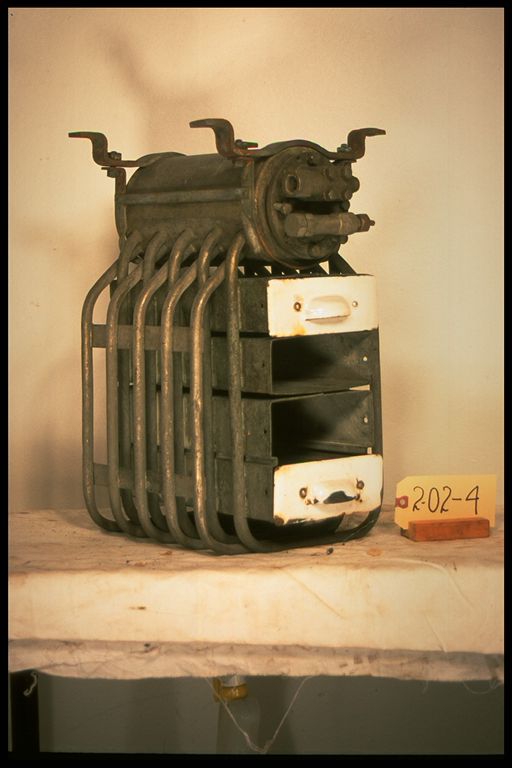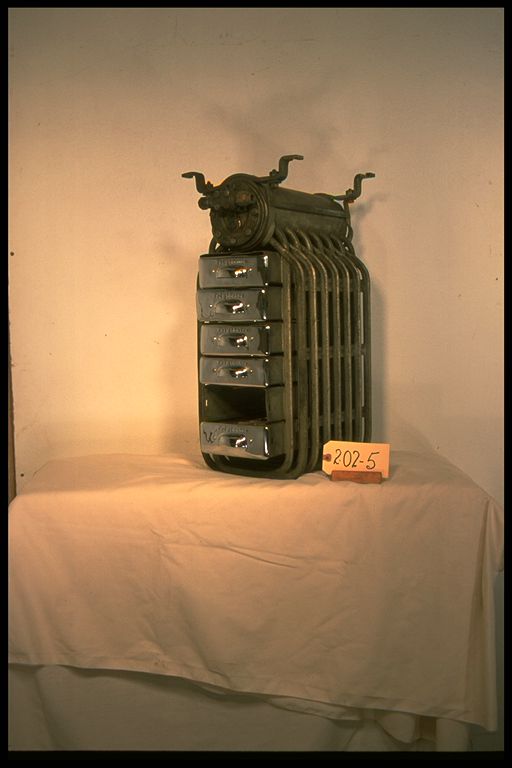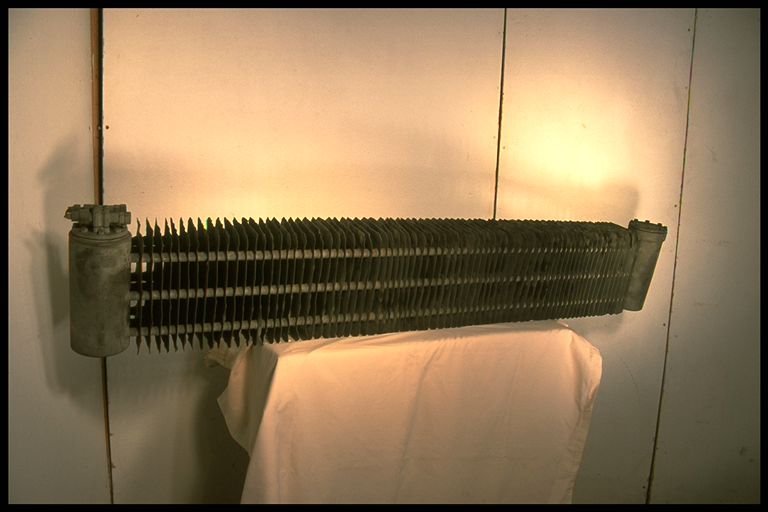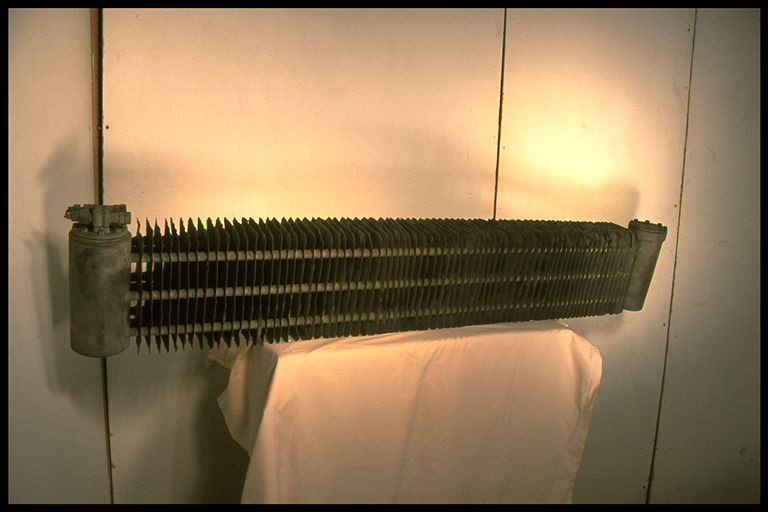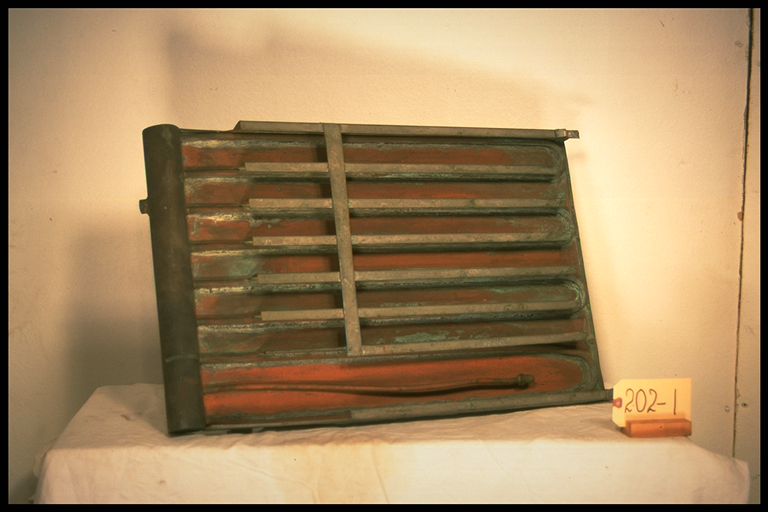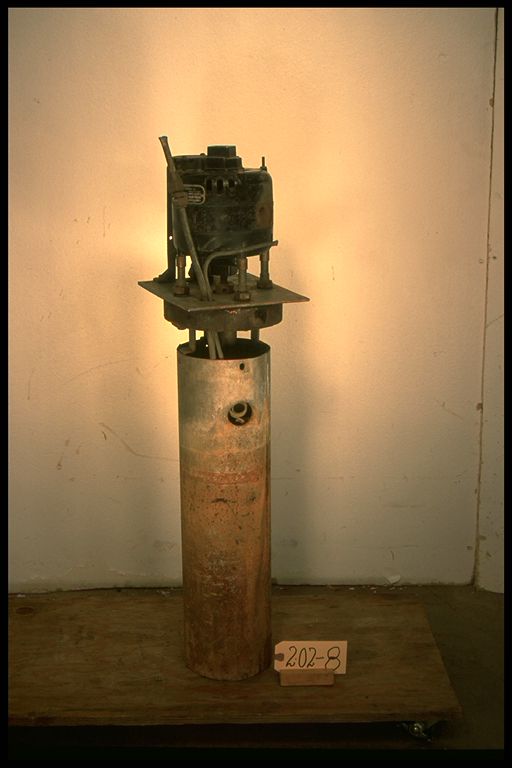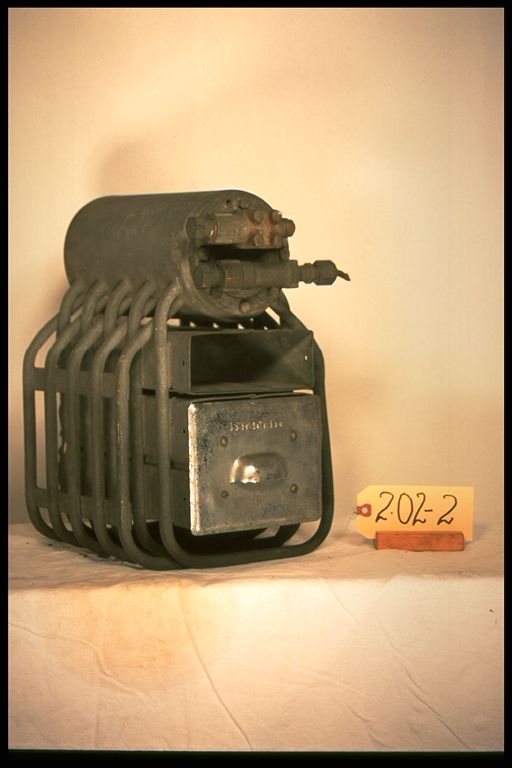2.02-3: Frigidaire 1926 Three Tray, Ice Maker Evaporator
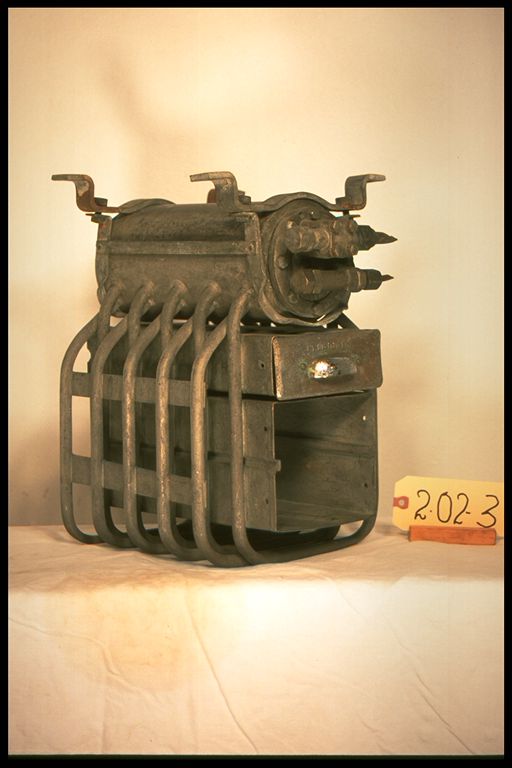
| HHCC Accession No. 2003.023 | HHCC Classification Code: 2.02-3 |
|---|
Description:
Three tray, ice maker evaporator with low-side float, in tinned copper tube and brake formed copper sheet, cooling unit for small commercial cabinet refrigerator, similar to #022, Frigidaire, 1926
Group:
2.02 Refrigerating and Air Conditioning Evaporators - Commercial
Make:
Frigidaire
Manufacturer:
Frigidaire Division, General Motors Corp.,Dayton Ohio
Model:
Serial No.:
Size:
9 1/2x 12x 15’h
Weight:
24 lbs
Circa:
1926, (Frigidaire Manual SER-405, shows product as discontinued in 1928)
Rating:
Exhibit, demonstration, education and research quality
Patent Date/Number:
Provenance:
From York County (York Region) Ontario, once a rich agricultural hinterlands, attracting early settlement in the last years of the 18th century. Located on the north slopes of the Oak Ridges Moraine, within 20 miles of Toronto, the County would also attract early ex-urban development, to be come a wealthy market place for the emerging household and consumer technologies of the early and mid 20th century.
This artifact was discovered in the 1950’s in the used stock of T. H. Oliver, Refrigeration and Electric Sales and Service, Aurora, Ontario, an early worker in the field of agricultural, commercial and consumer technology.
Type and Design:
Flooded evaporator with low-side float in tinned copper tube and brake formed copper sheet
Construction:
Constructed in tinned, heavy copper plate, with 5’ dia., 14 inch, brass float chamber, with brass, flange mounted float assembly, calibrated for S02 refrigerant; 5 pass, 1/2’ copper distributing tubes, without side box fin.
Material:
This evaporator, while similar to #022, has been produced gleaming white porcelain tray fronts, with minor signs of chipping and rusting, the natural effects of aging in a corrosive SO2 environment.
The chrome fronts used on item #022 appear to be better suited for the application, possibly suggesting this was an earlier design upgraded for better customer appeal and longer operating life.
Special Features:
Accessories:
Equipped with 2 heavy gauge, brake formed ice cube trays in tinned copper sheet, one deep and one shallow
Four point hanger bracket in heavy galvanised steel strap
Capacities:
An ice making evaporator with 3 tray ice making capacity, employes a clever double tray module that converts to frozen food storage, or to ice making with the inclusion of a sliding shelf
Frigidaire’s manual SER-45, Chapter 1A, P. 25, suggests such evaporators were rated at about 10 lbs of ice per freezing and required about 5 ‘ lbs of SO2 refrigerant to flood the evaporator, sufficient to clear the household and the neighbourhood, if a serious leak occurred
Performance Characteristics:
Operation:
Control and Regulation:
Liquid refrigerant float operated metering device
Targeted Market Segment:
Small commercial food stores, large private estate and institutional use
Consumer Acceptance:
Merchandising:
Market Price:
Technological Significance:
See background notes on technological significance of early mechanical cooling units (evaporator), THOC-HVACR inventory item 011.
This specimen is representative of the proliferation of models and sizes of low-side float operated evaporators of the period, largely by Kelvinator and Figidaire, as they attempted to stretch this ice making technology to its limit. Dinosaur like, costly, complicated and trouble prone by comparison with the evaporator technologies that would shortly follow, this genre would largely disappear from manufacture’s catalogues by the early 1930’s, although would be operational in the field until after WWII ‘ requiring repair shops to rebuild an calibrate floats and needle seats.
To contrast the weight, size, seeming complexity, as well as materials and manufacturing costs with the technology reflected in inventory items 015 to 021 is instructive. The classic process of progressive simplification in technological innovation and change is well exemplified.
Industrial Significance:
With complex, demanding construction, the evaporator would make many demands on manufacturing and materials engineering in the early years of the 20th century.
Socio-economic Significance:
Socio-cultural Significance:
Donor:
G. Leslie Oliver, The T. H. Oliver HVACR Collection
HHCC Storage Location:
Tracking:
Bibliographic References:
Frigidaire Installation and service manual SER-45
